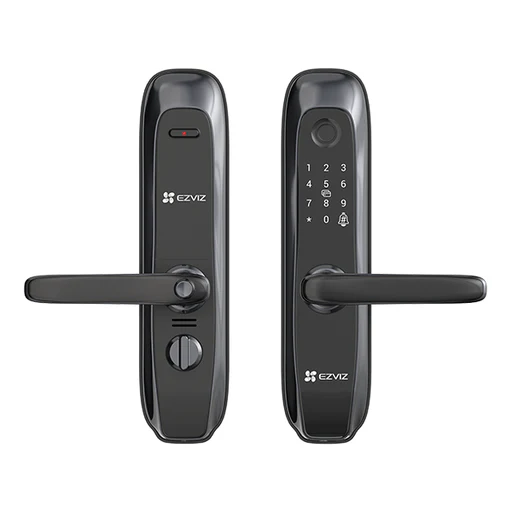From Keys to Codes: The Security Benefits of Digital Door Locks


In an age where convenience walks hand in hand with caution, digital door locks are no longer a luxury but a necessity. These smart systems don’t just protect your entryways; they transform how you experience home security. Imagine walking up to your front door, placing your finger on a scanner, and entering without fumbling for keys, or unlocking using a smartphone app the moment you arrive. Digital door locks replace outdated mechanical keys with smarter, safer, and more reliable access methods that suit modern lifestyles while integrating into smart home security systems.
The rise of digital door locks
Traditional locks have served us for centuries, but their limitations are obvious in today’s connected world. Keys can be lost, duplicated, or stolen and mechanical locks can be picked or bumped. Over the past decade, smart locks—featuring fingerprint recognition, RFID cards, PIN codes, Bluetooth, and Wi-Fi connectivity—have gained widespread adoption in homes, apartments, and offices. Smart home ecosystems now commonly pair digital door locks with CCTV cameras, smart alarms, and voice assistants, making access control part of an integrated security strategy.
How digital locks boost security
Digital door locks close many security gaps left by mechanical systems. Biometric fingerprint access ties entry to an individual’s unique identifier, making duplication nearly impossible. PIN code locks allow homeowners to change or revoke access instantly, preventing unauthorized repeats. RFID cards can be deactivated if lost, and smartphone-based unlocking can be combined with two-factor verification for extra protection. Many smart locks also record entry logs, so you can track who entered and when—valuable for both homes and rental properties. When connected with network video recorders (NVRs) or cloud CCTV systems, locks and cameras provide correlated evidence for incidents.
Convenience and controlled access
Beyond security, the convenience factor is a major advantage of digital locks. No more hiding spare keys under mats or worrying about lost keys. Temporary or scheduled access codes can be issued to guests, cleaners, or delivery staff and then removed automatically. For families with kids, elderly members, or domestic staff, keyless entry removes daily stress and reduces the need to duplicate physical keys. Remote unlocking through mobile apps lets homeowners grant access while away, and geo-fencing features can unlock doors automatically when you approach, saving time and effort.
Real-time monitoring and smart integration
Modern smart locks often come with mobile app integration that sends real-time alerts for unauthorized attempts, low battery, or forced entry. Integration with IP cameras, motion sensors, and smart alarms lets you see live footage the moment an alert is triggered. Linking locks with home automation platforms enables advanced workflows—such as turning on lights and disarming alarms when a verified user enters. For high-risk neighborhoods or commercial sites, combining access control with CCTV, video analytics, and cloud storage creates a proactive security posture that deters intruders and speeds response times.
Durability, fail-safes, and reliability
High-quality digital locks are built to be tamper-resistant and weatherproof, making them suitable for exterior doors and exposed entrances. Many models include automatic locking, fire-safety override features, and battery backup or emergency mechanical key options to prevent lockouts during power or battery failures. Firmware updates delivered via Wi-Fi keep the lock’s security protocols current and patched against vulnerabilities. Encryption and secure authentication protocols reduce the risk of remote hacking when compared to unsecured IoT devices.
Types of digital door locks
Choosing the right type of smart lock depends on needs and budget. Biometric fingerprint locks offer top-tier security and quick access. PIN code or keypad locks are cost-effective and simple to manage. RFID/card-based systems are common in apartment complexes and offices where many users need access. Bluetooth and Wi-Fi-enabled locks add remote control and integration with mobile devices and cloud platforms. Hybrid locks combine two or more access methods—such as fingerprint + PIN—for layered security. Each option supports different use cases, from single-family homes to multi-tenant buildings and commercial sites.
Digital locks vs. traditional locks
Unlike mechanical locks that can be picked or duplicated, digital locks rely on electronic authentication and multiple redundancies. Physical keys are easily copied and lost, whereas digital credentials can be revoked instantly. Smart locks offer audit trails and conditional access control that mechanical systems cannot provide. While traditional locks are inexpensive upfront, smart locks deliver long-term value through reduced locksmith calls, fewer rekeying expenses, and enhanced security features that protect property and occupants more effectively.
Cost considerations and return on investment
Initial costs for smart locks are higher than basic mechanical locks, and professional installation may add to the expense. However, consider the total cost of ownership: avoiding repeated key replacements, emergency locksmith services, or losses from break-ins often offsets the upfront price. For landlords and short-term rental hosts, the ability to issue temporary codes and track access can save significant time and money. The peace of mind and integration with other security systems also add intangible value that makes digital locks a wise investment.
Common concerns and practical tips
Security-minded buyers often worry about hacking, battery failures, and interoperability with existing doors. Choose locks with strong encryption, regular firmware updates, and reputable vendor support. Look for models with battery indicators and emergency mechanical keys or backup power ports. Check compatibility with your door’s dimensions and with other smart home systems (Zigbee, Z-Wave, Bluetooth, or Wi-Fi). Always buy from trusted brands and authorize professional installation if you’re unsure about fitment or electrical integrations.
The future of access control
Digital locks will continue evolving, incorporating AI, facial recognition, biometric fusion, voice commands, and deeper IoT integration. Cloud-based management and enterprise-level access control platforms will make it easier for property managers to scale security across multiple sites. As 5G, edge computing, and smarter video analytics mature, locks will act as nodes in a larger intelligent security fabric that offers predictive alerts, automated incident response, and seamless user experiences.